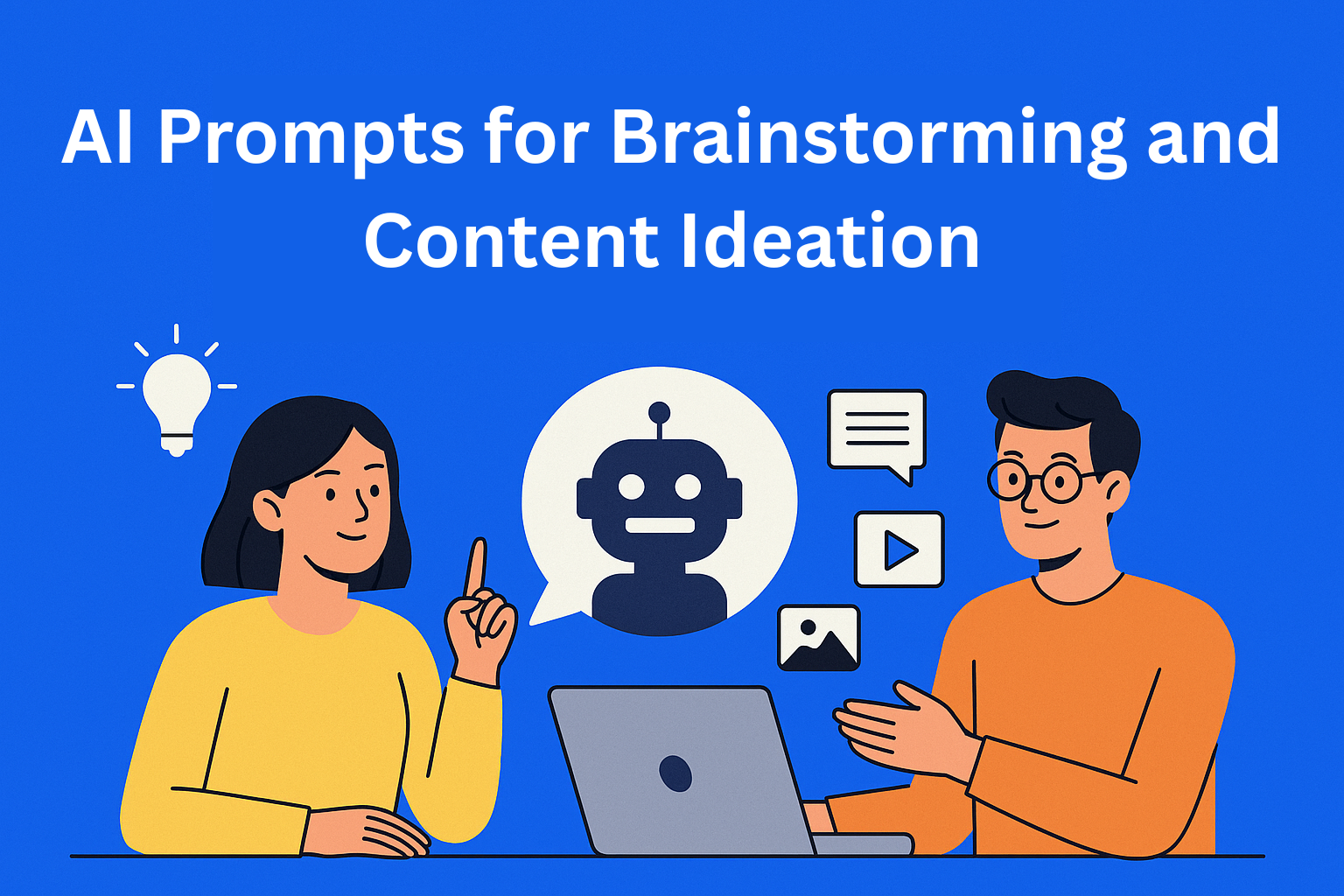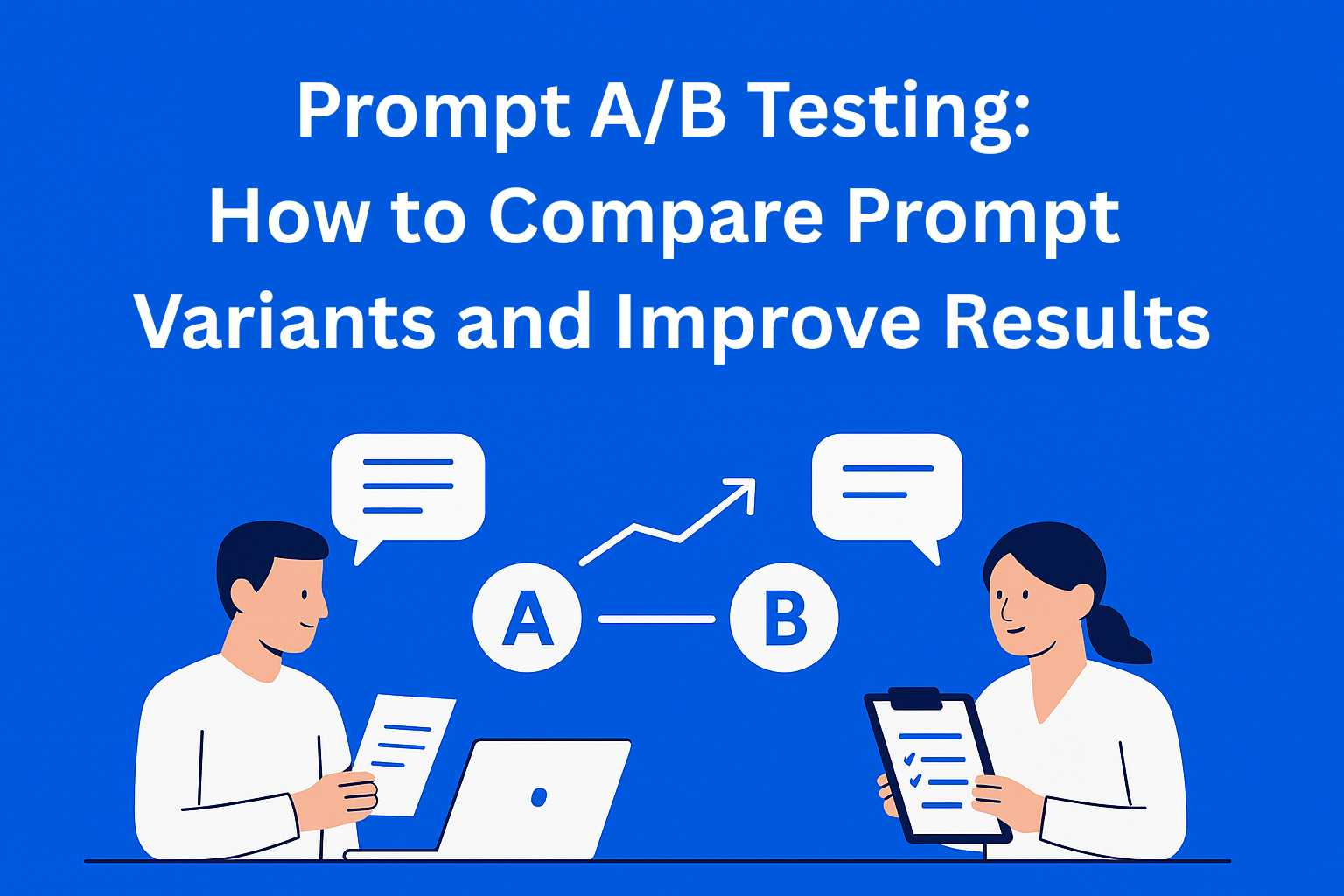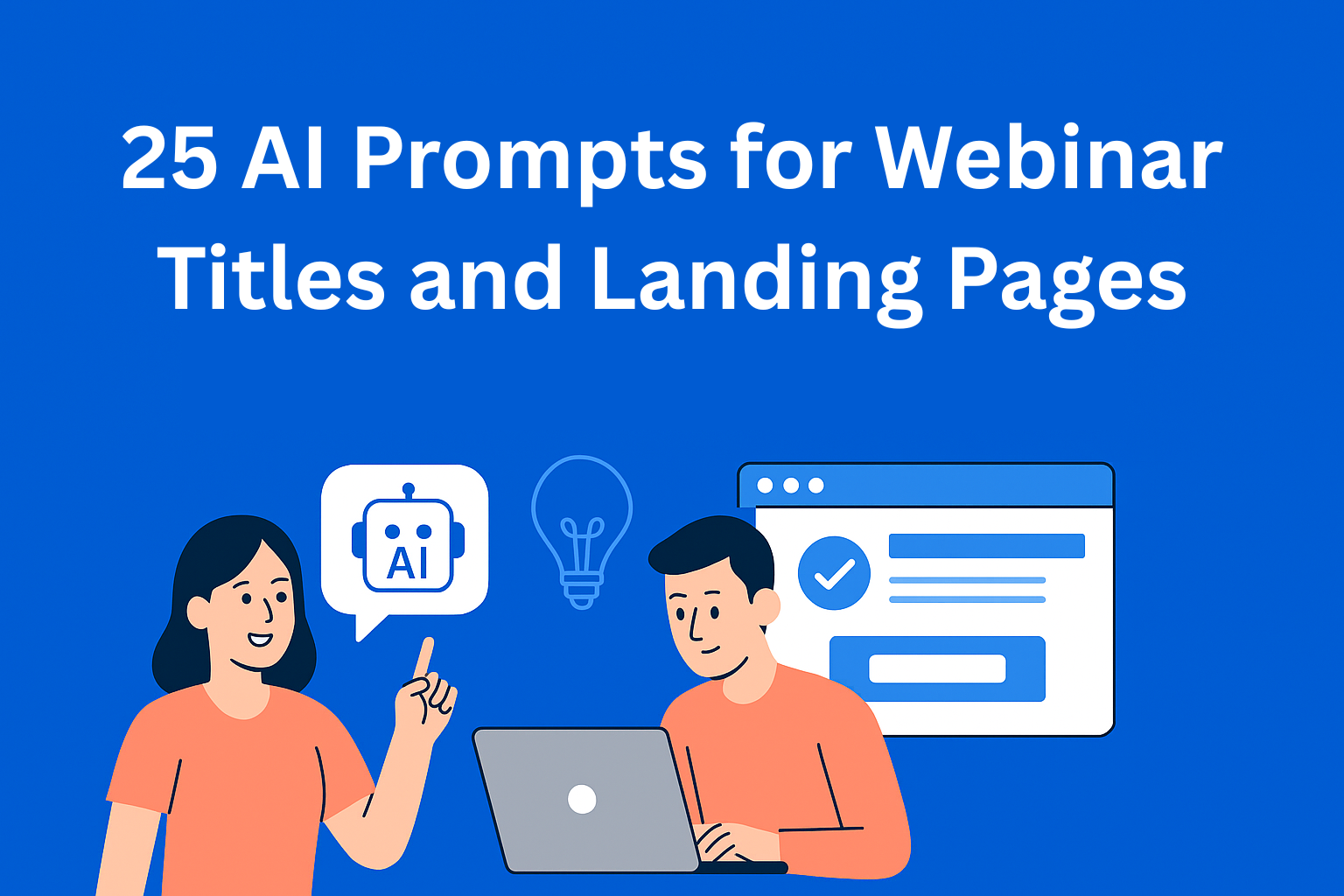AI Prompts for Creative Brainstorming and Content Ideation
Stuck on content ideas? This guide shows you how to use AI prompts to spark blog topics, headlines, video scripts, and more - fast, easy, and with less stress. Learn how to get creative with the right questions and make AI your favorite brainstorming tool.

If you ever run out of ideas for a blog, social media post, or newsletter - don’t worry, it happens to everyone. The good news is that you can use AI to help you come up with content. It’s not about letting AI do the job for you, but rather using it to spark ideas and give you some direction to build on. In this post, we’ll walk through examples of AI prompts that can help you create content faster and with less stress.
Key Takeaways
- AI is a powerful brainstorming tool that can quickly generate diverse and creative content ideas across formats.
- Good prompts provide context, tone, format, and audience - this makes the results more relevant and useful.
- Use prompt templates for blog posts, headlines, videos, and newsletters to speed up ideation and reduce mental blocks.
- Try creative prompts like metaphors, strange perspectives, or combining unrelated concepts to stand out from the crowd.
- Prompt chaining helps you build structured content step-by-step, turning a single idea into a full post, campaign, or script.
Why Use AI for Creative Brainstorming?
When we talk about creativity, AI might not be the first thing that comes to mind. But tools like ChatGPT can be super helpful when you need to generate new ideas.
First, it’s fast. AI can give you 10, 20, even 30 ideas in just a few seconds.
Second, it’s diverse. You’ll get a mix of serious, light, bold, and even unexpected suggestions.
And third, when you’re stuck and not sure where to begin, AI can help you get started more easily.
For example, instead of sitting around thinking “what should I write about marketing?”, just ask: “Give me 10 original blog topic ideas about digital marketing for small businesses.” And just like that - you’ve got ideas.
What Makes a Good AI Prompt?
Not every AI request will give you useful results. Here’s a quick formula to write a prompt that actually works:
- Give context - Say who you are and what you’re working on - are you writing a blog, making social media content, or something else?
- Define the format - Be clear about what kind of content you want. Do you need a list of ideas, a short post, a catchy title, or a video script?
- Set the tone - Should the text sound casual and fun, serious and professional, or like it’s coming from an expert?
- Add limits - Mention the desired length - 100, 300, or 1,000 words - and who the content is for (teenagers, business owners, experts, etc.). That helps the AI adapt its language and content to match your audience.
Example of a solid prompt: "Imagine you’re a TikTok marketing expert. Give me 5 fun and educational ideas for small business owners. Each video should be up to 30 seconds long."
The more specific you are, the better your AI-powered content ideas will be.
Prompts for Different Types of Content
1. Blog Post Ideas
- “Give me 10 interesting and unique blog topics on personal growth that haven’t been overused.”
- “Can you suggest some controversial or surprising statements about healthy living that I can explore in a blog post? Something that might spark conversation or offer a fresh take.”
These prompts will help you quickly discover engaging and relevant topics.
2. Attention-Grabbing Headlines
- “Can you write 5 catchy but meaningful headlines for a blog post about successful people’s habits? I want them to grab attention but also promise real value.”
- “Can you rephrase this headline to make it more engaging for LinkedIn readers? For example: ‘What I changed in my business to grow revenue by 30% in 3 months.’ Something professional, clear, and useful.”
Strong headlines = more clicks. AI is great at helping you test different headline options.
3. Video and Reels Scripts
- “Can you make a simple outline for a 30-second TikTok video about how to organize your morning? I need a clear structure - intro, key tips, and a short wrap-up to keep it helpful and engaging.”
- “Can you write an attention-grabbing hook and a punchy closing line for a YouTube Shorts video about what not to do when negotiating a salary? It should be clear, short, and hold viewers’ attention until the end.”
If you’re creating video content, these prompts can save you tons of time.
4. Newsletter Content
- “Write three short intro paragraphs for a newsletter about productivity. Make it feel like a personal message - relaxed, friendly, and helpful. I want to share a thought, an insight, or a relatable question to get readers interested.”
A newsletter should sound personal - and AI can help you make it sound that way.
Prompts for Fresh and Creative Thinking
These prompts are useful when you’re trying to think outside the box. They’re not tied to a specific format like a blog or video, but they help you shift perspective and break away from repetitive content patterns. They’re great when you feel stuck or want to make your content stand out.
1. Metaphors and Analogies
- “Can you help me explain how AI works using a football analogy? For example, is AI like a coach, a player, or the whole team?”
When you use everyday comparisons (like sports, food, or daily routines) your ideas become easier to understand and more memorable.
2. Unusual Perspectives
- “How would a five-year-old explain why saving money is a good thing? For example: ‘If I don’t buy candy today, I can buy a bigger toy next week.’”
- “Imagine someone who’s never used social media before sees Instagram for the first time. How would they describe it? What would seem weird, fun, or confusing?”
These kinds of prompts help you look at familiar topics from a new angle. They spark original ideas and help your content feel fresh. Super helpful when everything starts to feel the same.
3. Combining Unrelated Concepts
- “Can you come up with a blog topic that connects the life of a digital nomad (someone who works online while traveling) with ancient philosophy like Buddhism? The topic should make sense and be helpful for readers looking to balance work, travel, and inner peace.”
This approach helps you come up with unique ideas and stand out from the crowd. It’s a smart way to grab attention and leave a lasting impression.
Simple Steps for Building Content with AI (Prompt Chaining)
Usually, one prompt = one idea. But if you want to build a whole content campaign, you can use a method called prompt chaining.
First, ask AI to suggest 5 blog topics about SEO for beginners. Once you get the list, pick one topic (say, the third one), and ask for an outline. Then, take it a step further - ask the AI to write an intro paragraph based on that outline.
This way, you build your content step-by-step, and by the end, you have a full, organized piece that’s ready to publish.
Tools That Can Help You
Besides ChatGPT, there are other AI tools that can make content creation easier:
- Notion AI - Great for organizing notes, planning content, or writing directly in your workspace. Simple and time-saving.
- Copy.ai - Best for short, promotional content like ads or social media captions. Comes with plenty of templates.
- Jasper - Ideal for long-form writing, like blog posts, emails, or even ebooks. It can adapt the tone and style of your writing. If you're using a platform like EasyContent, you can integrate Jasper with it.
- PromptHero - A helpful site full of prompt examples to inspire how you ask questions or guide AI. Lots of ready-to-use ideas.
When used with the right prompts, these tools can save you time and help improve your content quality.
Mistakes to Avoid
- Don’t write super generic prompts like “Write me a post about Instagram” - AI won’t know what you actually want, and you’ll end up with bland content.
- Use AI to help you, but don’t skip your own thinking. You still need to guide it based on your topic, audience, and goals.
- Always know who you’re writing for - content for teens, entrepreneurs, or experts shouldn’t sound the same. Adjust the tone and language to fit your readers.
Think of AI as a tool - you’re still the creative lead.
Final Thoughts
When you’re not sure where to start or need a different perspective, just ask AI a simple question and you’ll get helpful suggestions. Sometimes that’s all you need to get going. Sometimes, it even gives you the full structure of a post.
Try different variations, adjust your prompts, and don’t be afraid to explore. You don’t have to know exactly what you need right away - you can start simple and let the ideas grow. If AI has seemed weird or too robotic before, give it a shot. It might just become one of your favorite creative tools.






